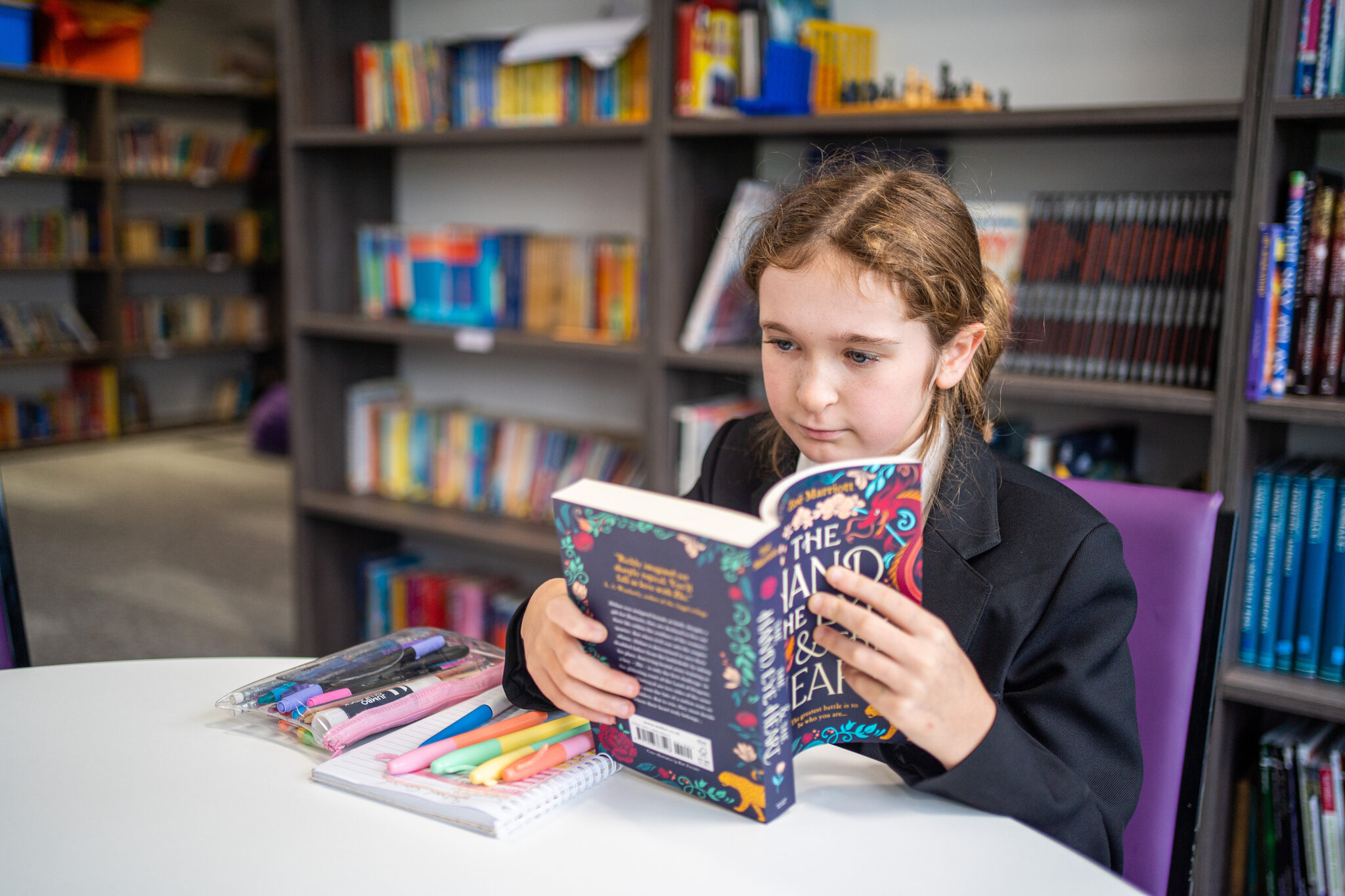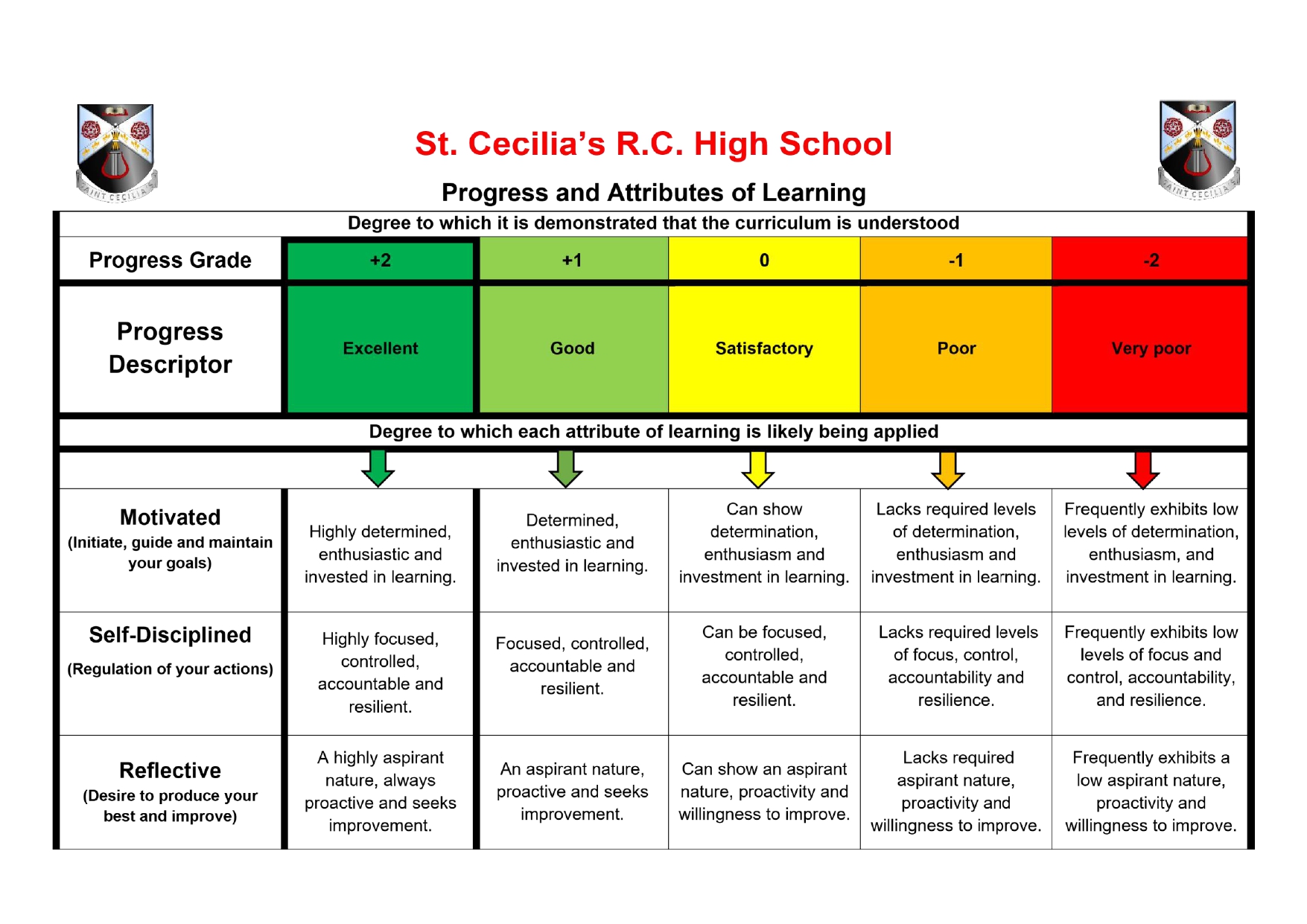
Assessment and Reporting Policy
Assessment & Feedback Policy
Progress and Assessing Progress
At St Cecilia’s, the curriculum is our progress model as it describes the journey our pupils need to go on to make progress; the journey needed to produce better outcomes and beyond. The assessments that our pupils undertake give us a snapshot of how well a particular aspect has been learned, sometimes even being converted into a ‘grade’, but that alone can rarely inform our pupils how to get better. For us, only the curriculum can do that. Our curriculum sets out the journey that our pupils must go on to get ‘better’ at each subject. In short, it models the progress that we would hope that each pupil will make.
An individual’s degree of progress will be reflected in their ability to demonstrate that they are learning the curriculum; that they know more and can remember more of the content. This will be evidenced by our pupils in many ways. It is teachers’ response to this information alongside the subsequent pupil response to the teacher adaptation, instruction and feedback that drives progress further.
Our assessment falls broadly into three categories:
Assessment for learning: We use formative assessment which is most useful in the lesson sequence to identify missing components/misconceptions of pupils. We check for understanding and are reactive, able to adjust our teaching and delivery to maximise student understanding and progress.
Assessment of learning: We use more summative assessment to assess more complex composites. Feedback, when written, tends to lend itself better to these tasks and will address missing components and misconceptions, spelling/grammar, and presentation. Feedback to pupils tends to initiate one of the following actions: redraft/redo, rehearse/repeat, revisit/respond, relearn/retest/research/record.
Assessment as learning: We encourage and teach pupils to self-regulate their own learning, and in so doing make complex decisions about how they understand, interpret and act upon feedback: How do I improve my work?
Attributes of Learning
For the curriculum to be seen as a legitimate progress model we must strive to ensure that:
- Every pupil has access to the same knowledge and that what pupils learn next is connected to what they already know, so that they could build connected knowledge. This way knowledge expands, and complexity is increased over time.
- Every pupil maximises their immersion in the curriculum and its teaching, capitalising on each learning opportunity by wholeheartedly engaging with it.
Progress and attributes of learning are therefore tightly linked. Clearly, the greater the degree that each pupil applies each attribute of learning, their immersion in their learning, the greater their opportunity to make progress will be. This will be seen and evidenced in the variety of assessment methods mentioned above. We also provide this summative indication each term as to what degree it is likely that each attribute of learning is being applied by relating these to the progress grade (your child’s evidence of knowing and remembering more) awarded.
We also provide you with more ‘real time’ feedback for how your child is applying each attribute of learning and therefore their receptivity to the curriculum, using Edulink. When an attribute of learning is being demonstrated to the level that justifies an achievement point in class, this attribute of learning will be provided for you. Similarly, when an attribute of learning is lacking, and where the teacher is required to utilise our behaviour recovery systems, the attribute of learning lacking will be provided.
